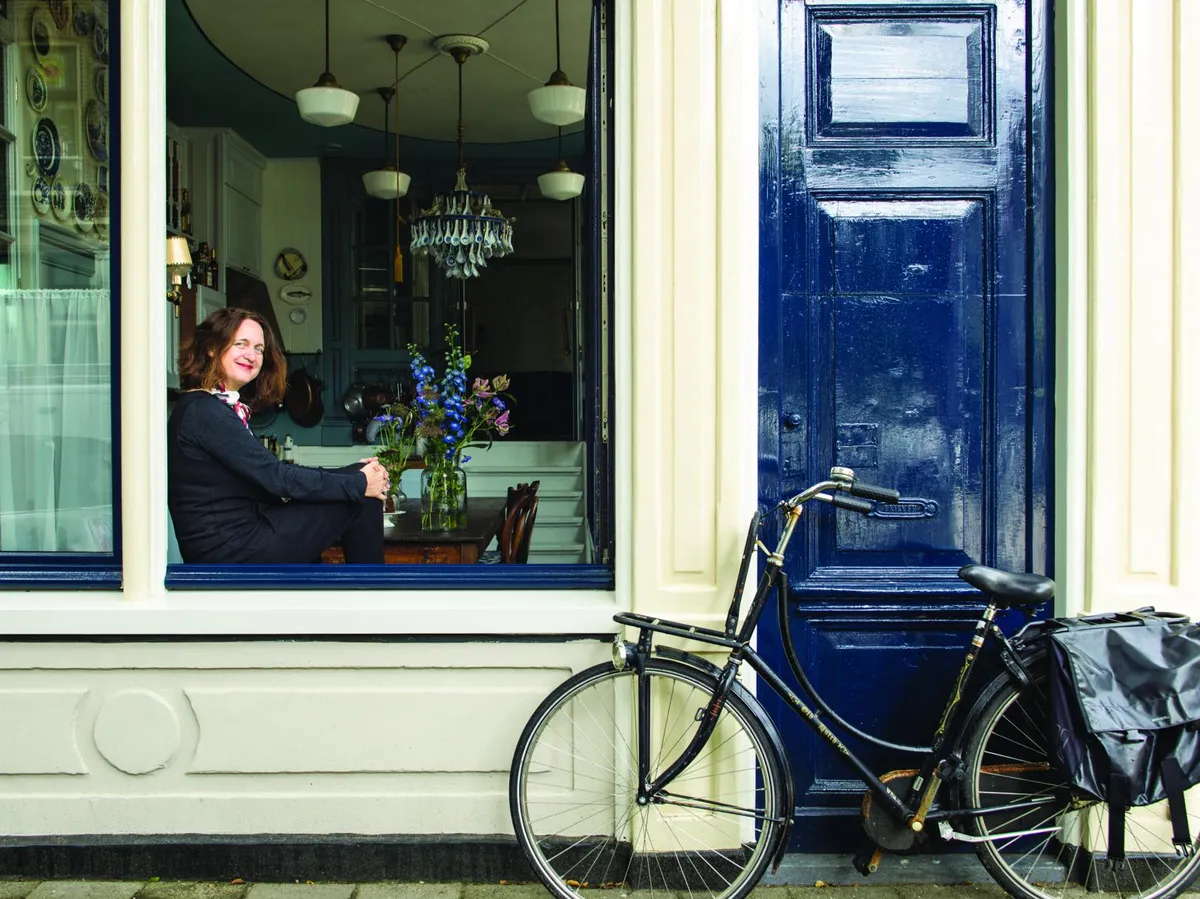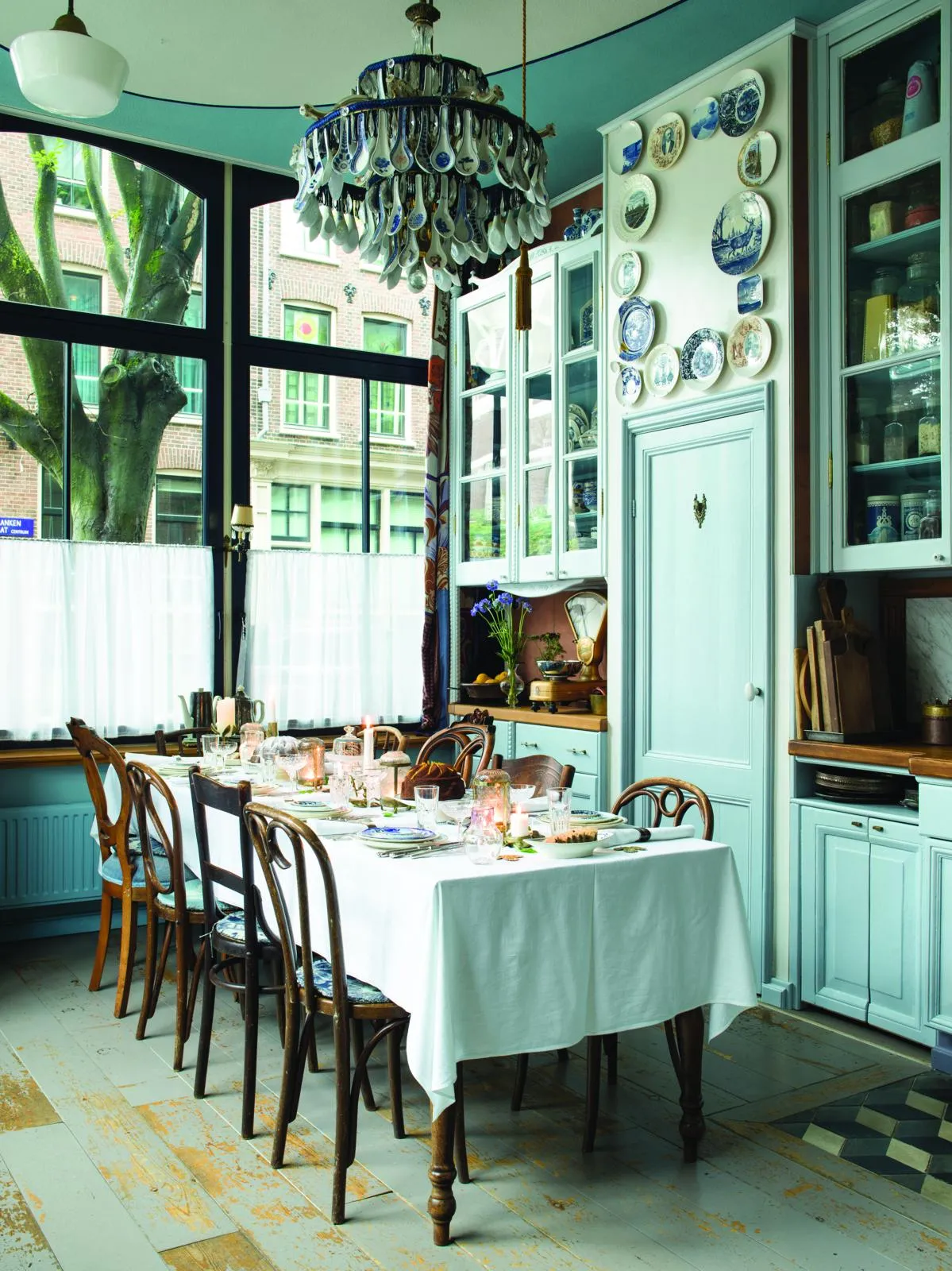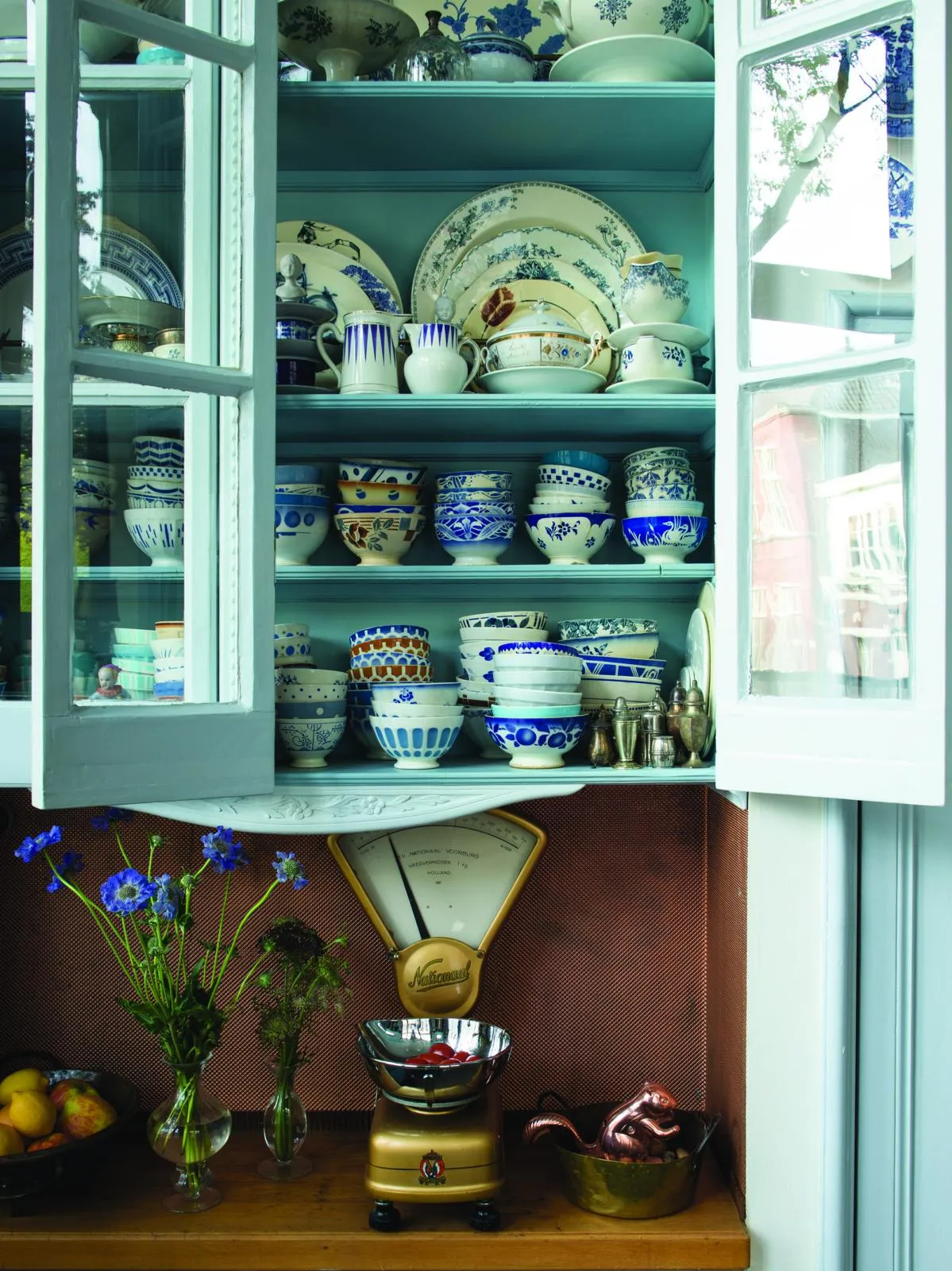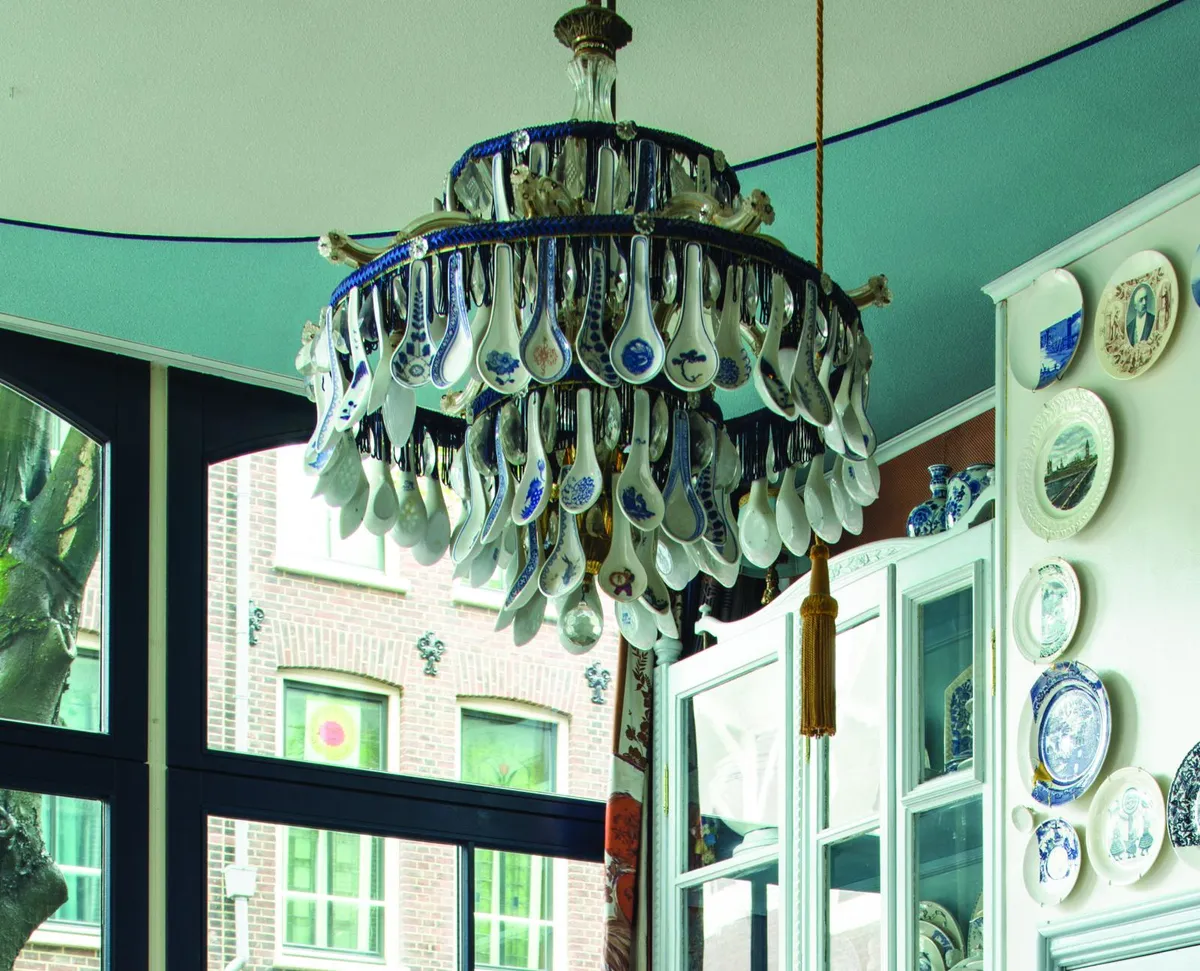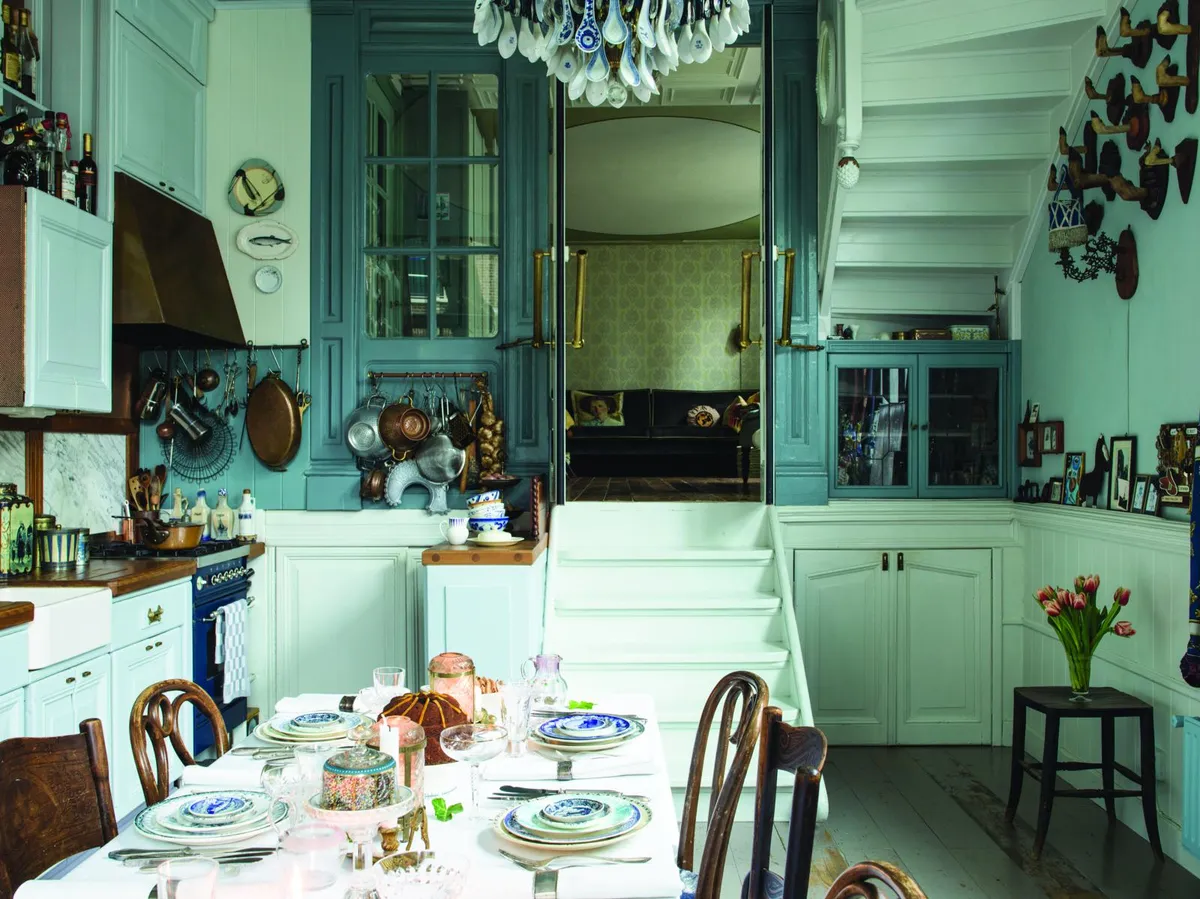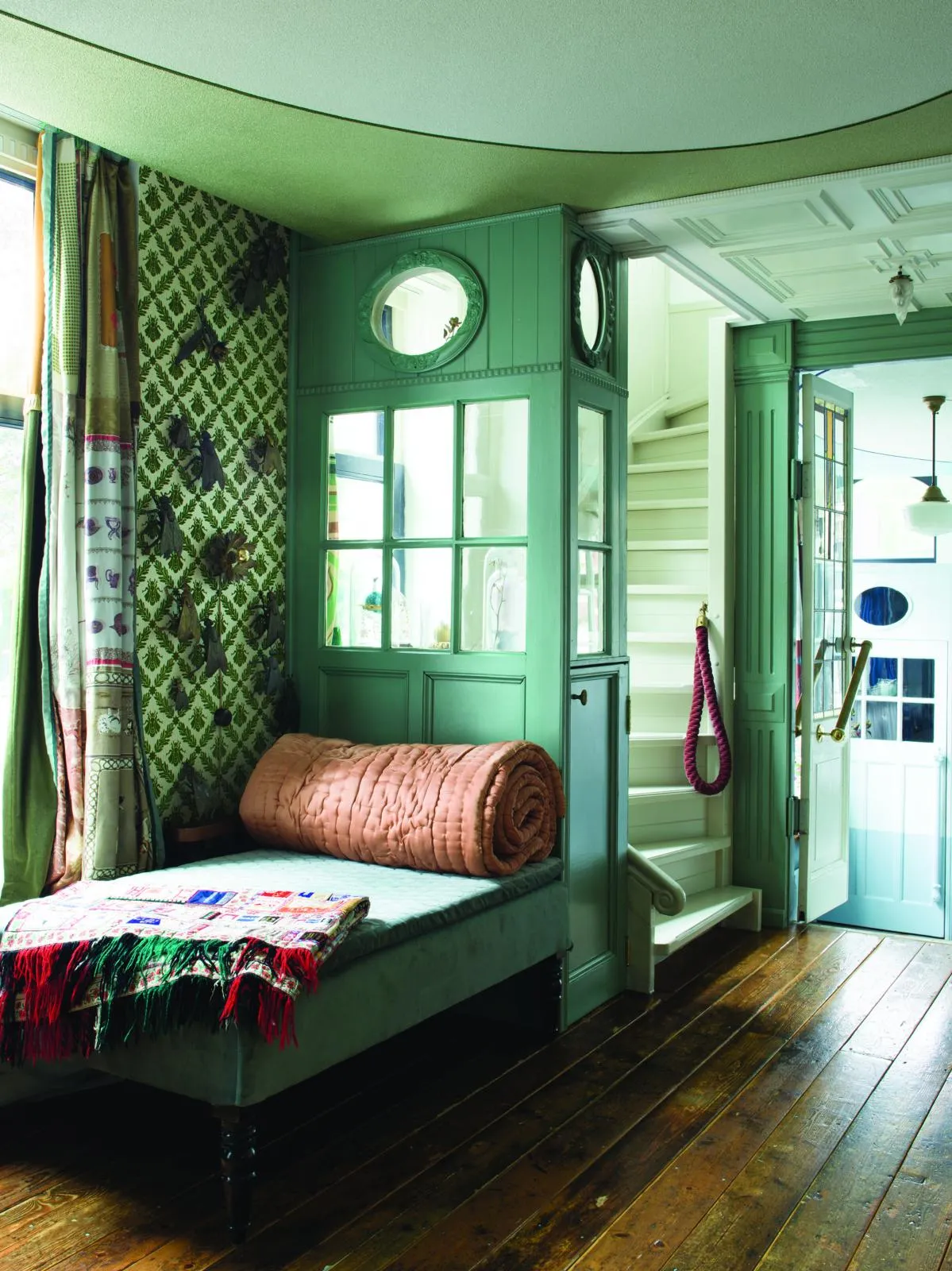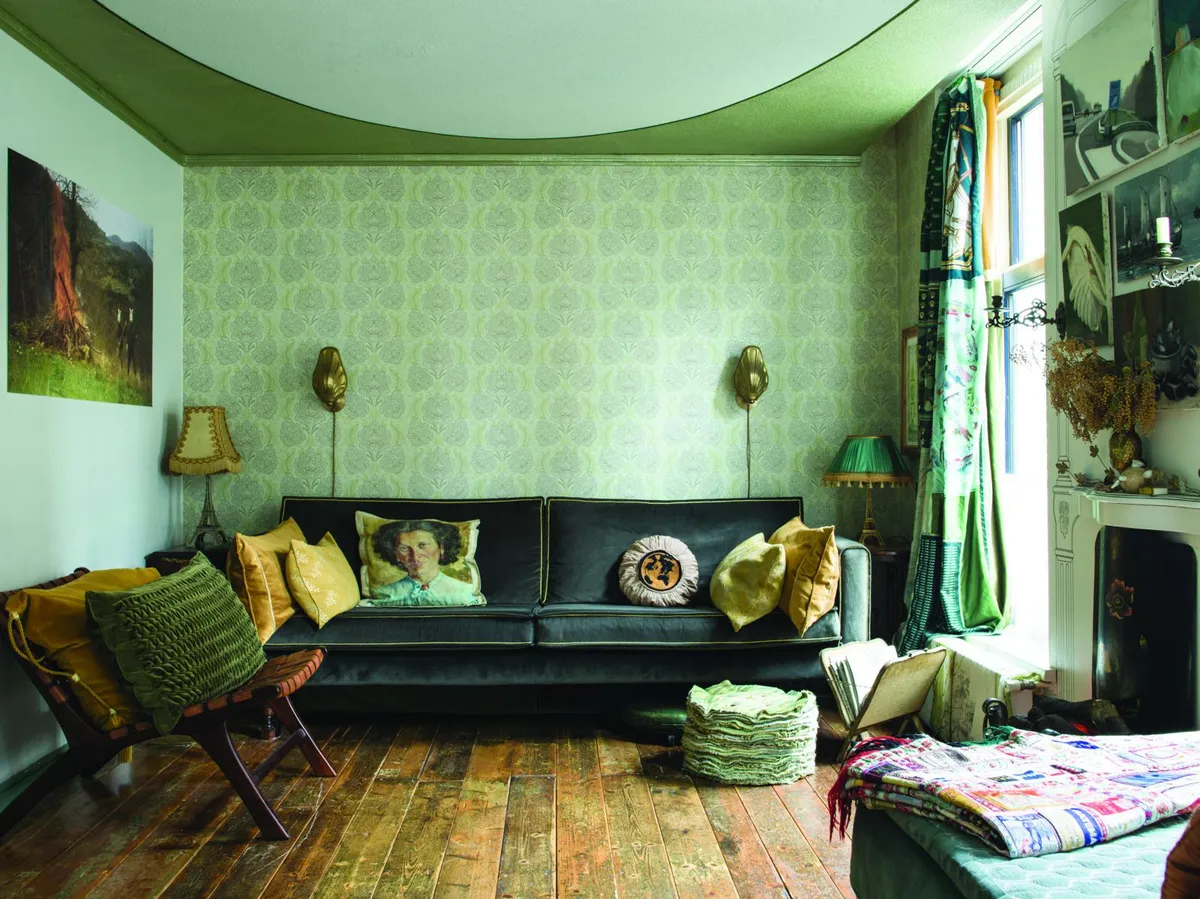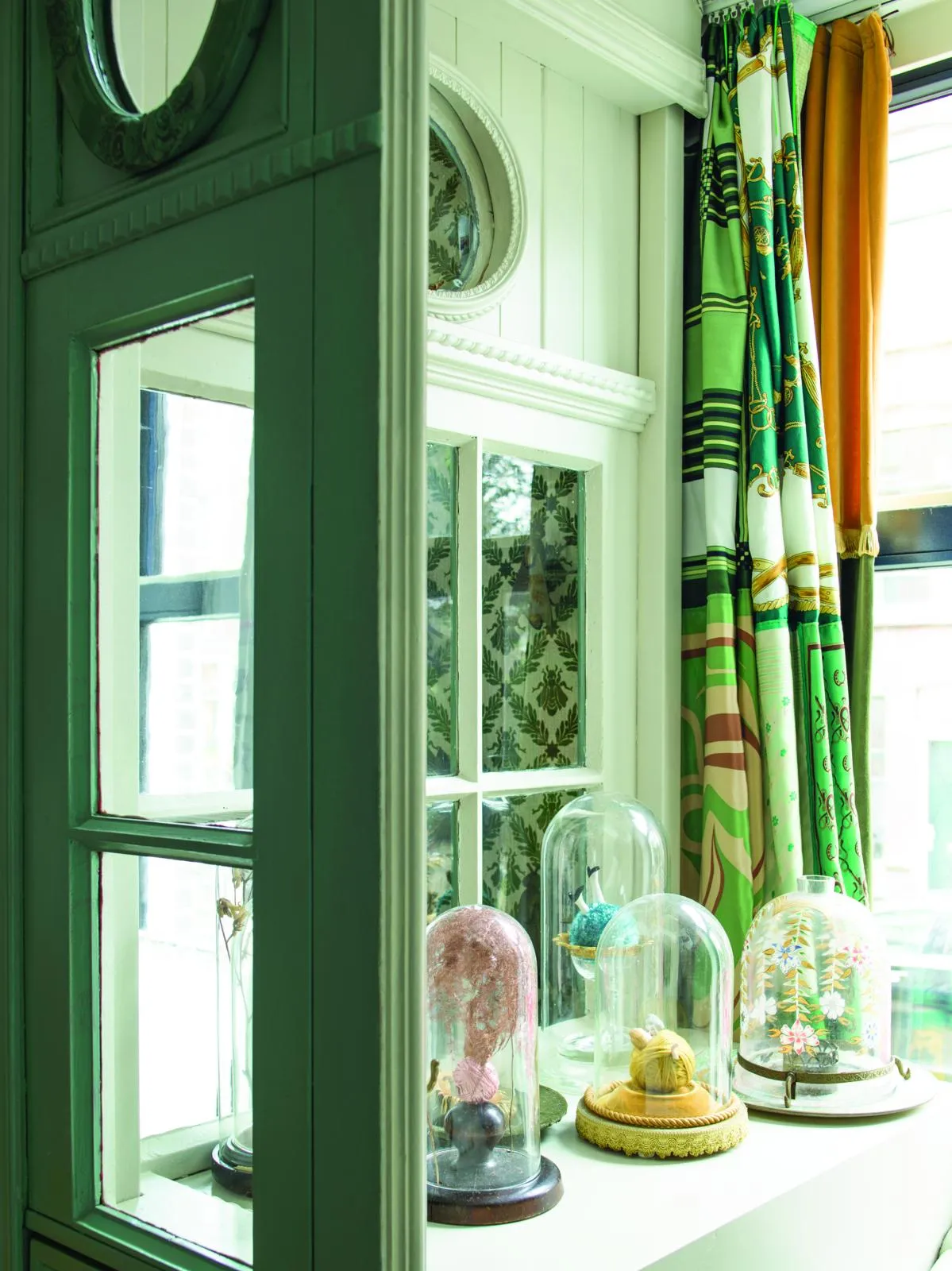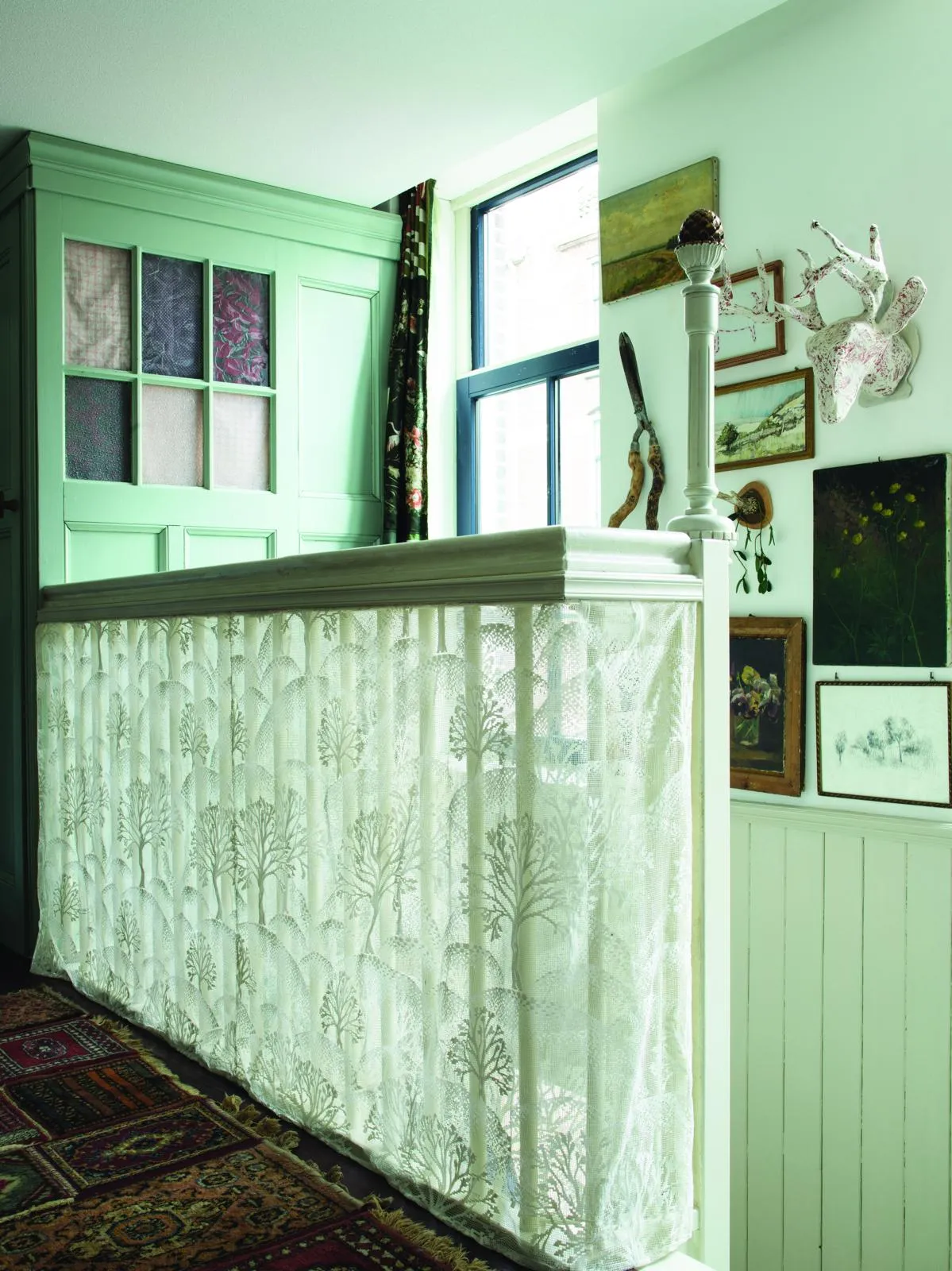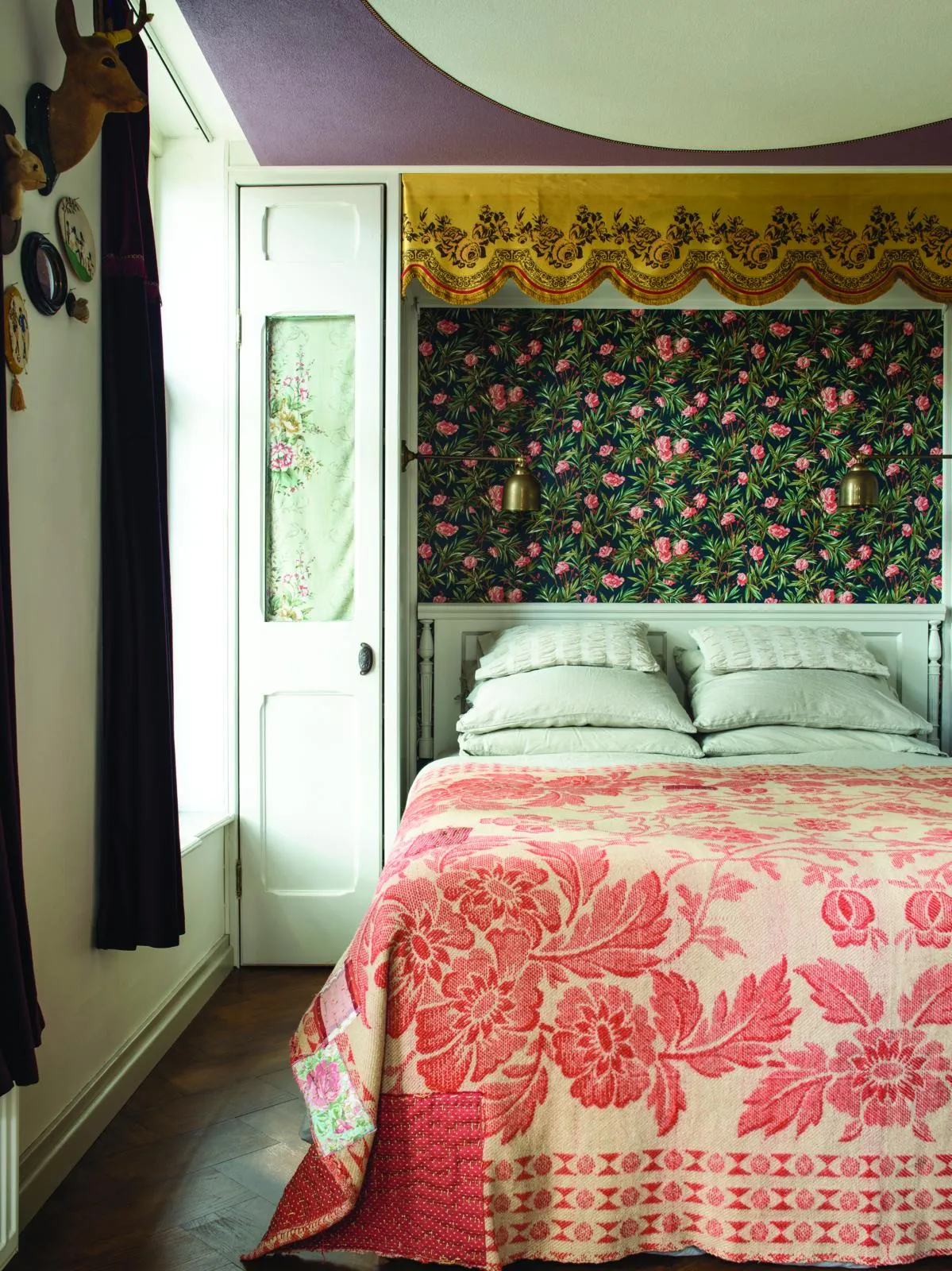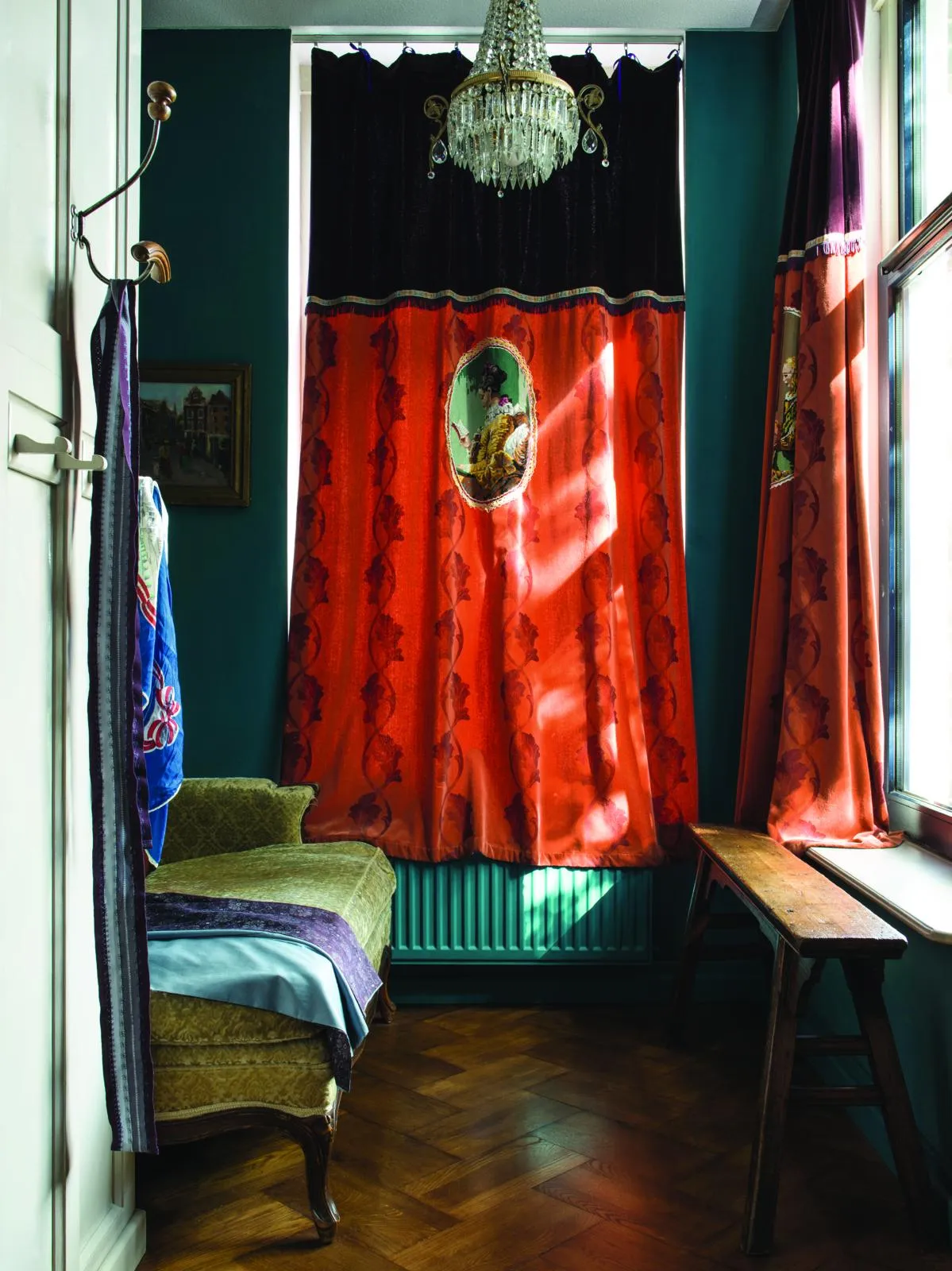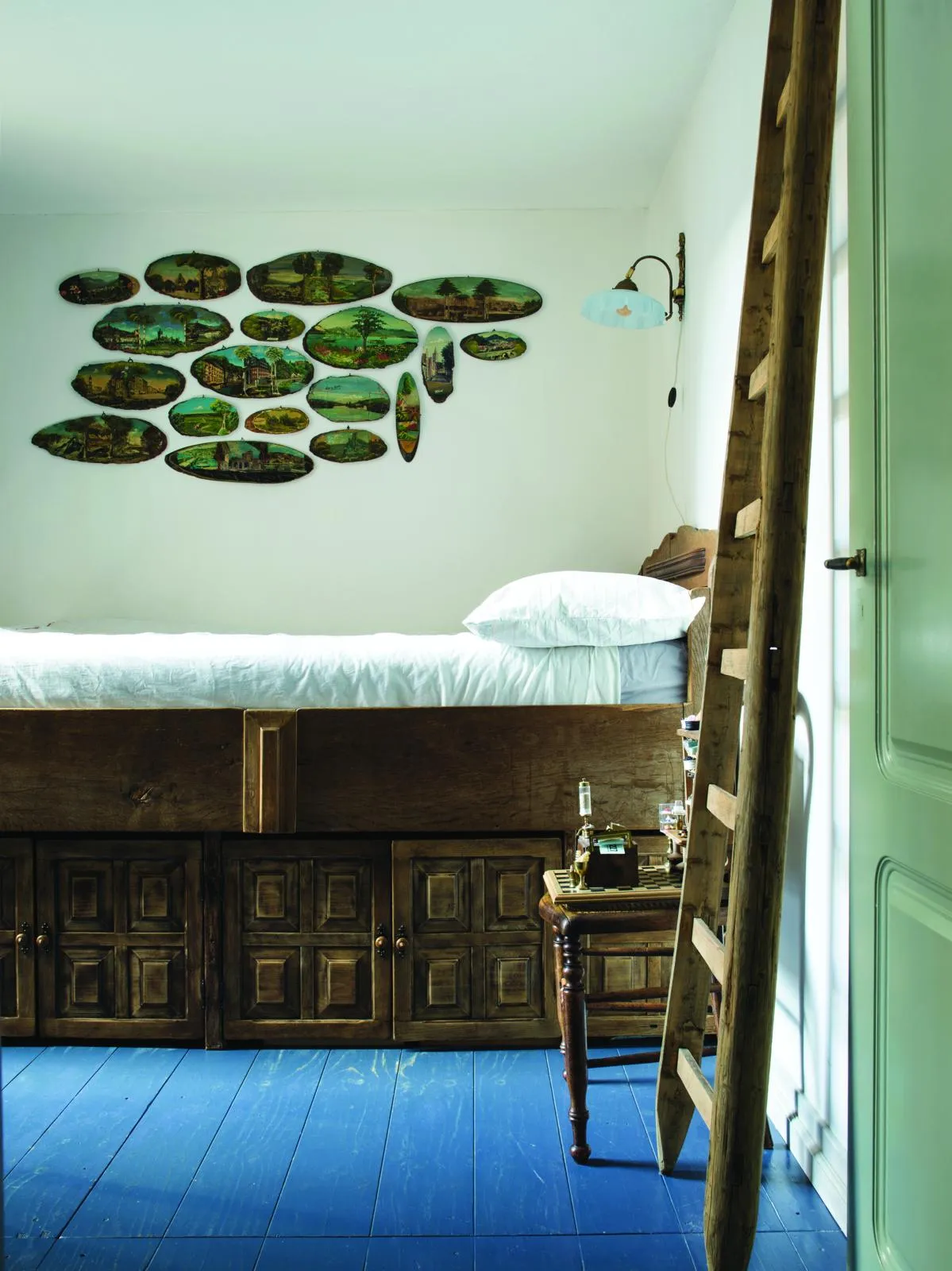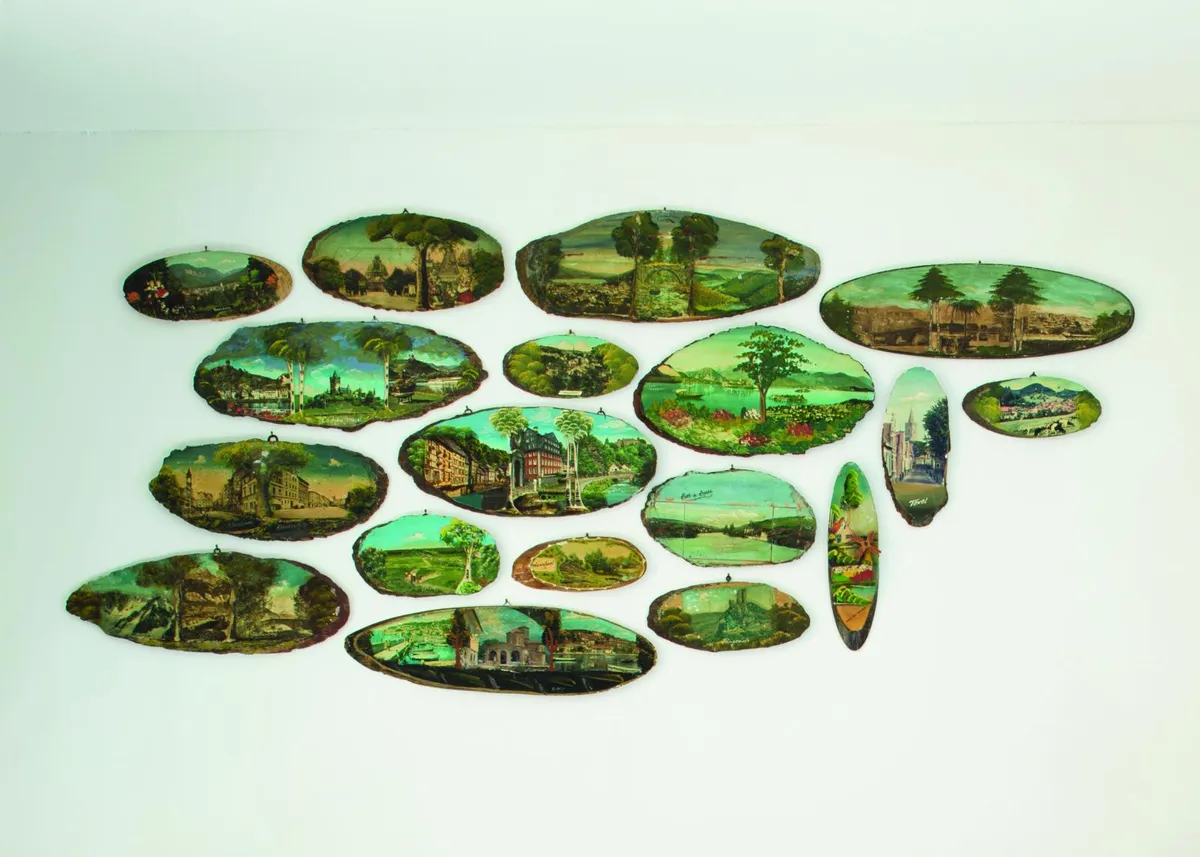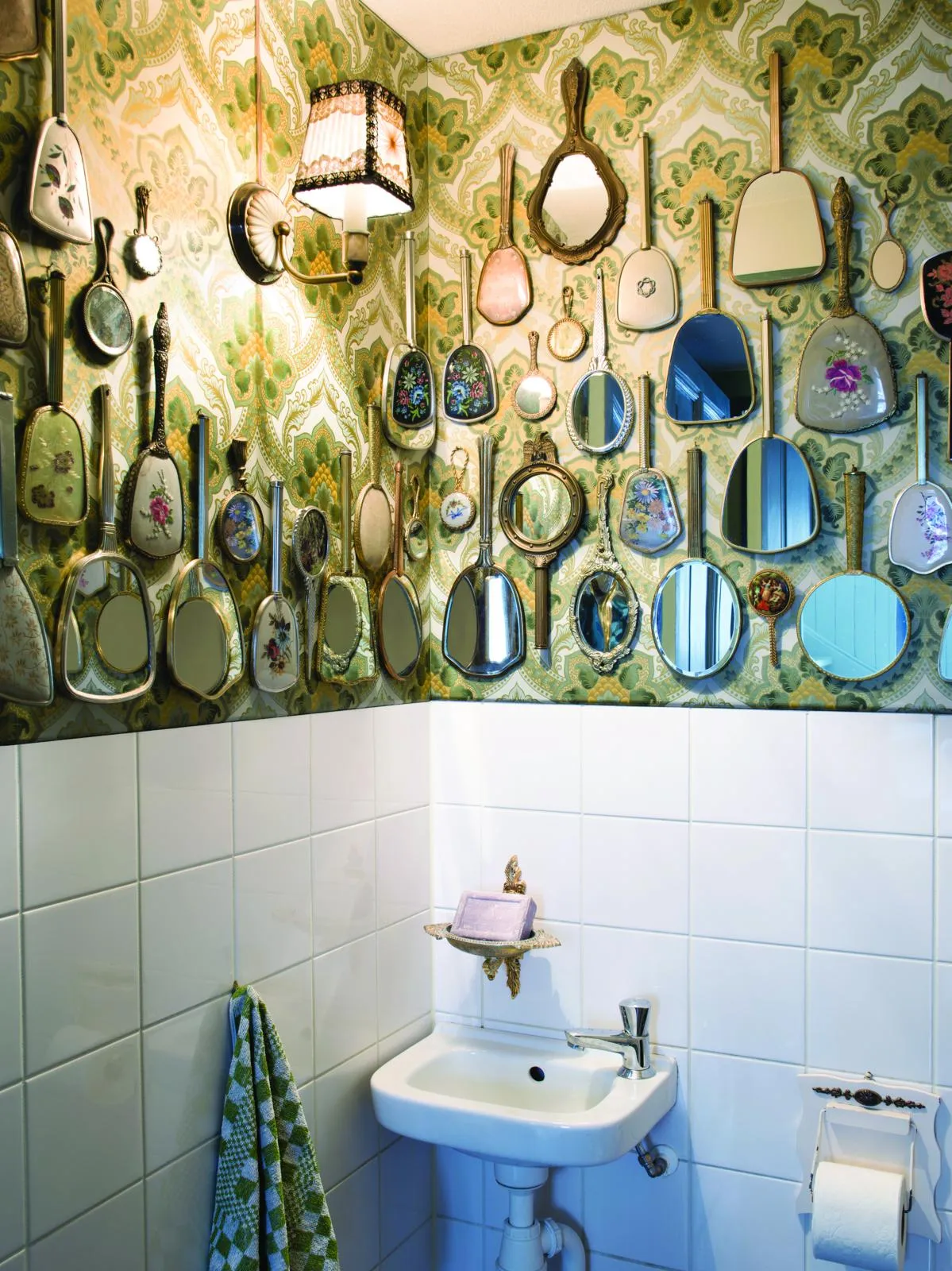Necessity is the mother of invention, and the home of author and artist Helma Bongenaar and her husband Jeroen Alberts is the very definition of this old adage. Built in 1880, their modest Amsterdam townhouse was originally a bar for the local dockers.
Helma and Jeroen discovered it 23 years ago, when it was a government-subsidised home for artists to access affordable studio space in the heart of the city. Helma, who was pregnant at the time, fell in love with the building, and, as luck would have it, the pair were selected out of many artists to become the new owners of this piece of local history.
Helma and Jeroen are keen upcyclers and believe that there is never a need to buy anything new, and this ethos has been the guiding principle behind all their interior style choices.
‘We don’t have a lot of money, but we do have grand taste! We always seek out affordable and practical solutions, and we love to skip-dive, which mortified our children when they were young,’ says Helma, who is the founder of Sentimental Journal, an international magazine dedicated to craftsmanship and collecting.
Their taste is informed by the grand Dutch canal houses in the city, their shared admiration for the Rijksmuseum, and Helma’s childhood, which was shaped by her parents’ love of antiquity. Her father collected 17th- and 18th-century technical books and taught Helma electrics when she was just 10; she still makes all her own lamps.
Her mother was obsessed with antique irons and French tableware, and the family spent many hours scouring flea markets and thrift stores across Belgium, France and Holland.
You also might like an artist's 18th-century beach house
Helma and Jeroen’s penchant for reusing old materials is evident throughout the house. The sitting room ceiling is made from wooden panels taken from an old French armoire, while the wallpapers were chosen from a shop in Ghent that only sells original 1950s, ‘60s and ‘70s papers.
Seven glass doors were given to them by friends and, in return, Helma cooked a seven-course meal as a thank you for each door. Jeroen – a talented carpenter and maker, as well as an artist and a partner in the theatre act Delinus – used the doors to create walls between the kitchen and the sitting room.
He also added a small vestibule between the front door and the kitchen, crafted from a pair of old school doors found in a skip; the door handle is an old lampstand pole. To generate extra light and warmth in winter, they added vintage mirror frames above, replacing the mirrors with glass.
Fascinating antique collections are on display around the house, including the downstairs bathroom, where Helma’s collection of vintage hand mirrors adorns the walls to brilliant effect.
In the bedrooms, antique fabrics are reused for bedding and pelmets, while elegant second-hand silk scarves, collected over the years, have been redesigned on the sewing machine as curtains for the kitchen and sitting room. Meanwhile, a blanket on the antique chaise was handmade entirely from old textile labels.
But it is the kitchen that is the heart of Helma and Jeroen’s home; painted in a series of soft, serene blues, with stripped-back wooden floorboards and a chandelier overhead. The chandelier was made by Helma from several discarded ones she discovered on the street, to which she added the fringing and spoons.
You also might like an 18th-century house in West Sussex
‘I love to recreate new things out of old things,’ she says. The kitchen cabinets were made by Jeroen from old doors, rescued from building sites and skips. ‘We always ask if we can take them,’ Helma explains. Jeroen added brass handles, which were once stair carpet rods.
‘We both love craftsmanship and detail, and we like that each panel and cabinet is individual. It is time consuming to use old wood, and nothing is the right size, but we appreciate it so much more.’
The dining table, surrounded by a collection of mismatched antique Thonet chairs, is always set as if for a feast: antique plates, 19th-century French glasses, polished candlesticks and embroidered napkins – found in Dutch junk shops and French flea markets – are arranged carefully on a crisp vintage linen tablecloth.
‘Cooking is so important to me,’ explains Helma, who is the author of a cookery book, Au Bon Coin, which translates as ‘The Good Corner’, inspired by the location of her home.
‘I’m now working on my second cookery book. The food is key, but so is the way it looks, and crockery is part of the charm. I love setting the table; placing the cloths, plates, silverware and glasses. All my collections come together on the table. The richer the table, the more welcome the guests feel.’
Helma also hosts monthly pop-up supper clubs, which are attended by artists and designers from all over the city. These events are renowned, not just for her spectacular food, but for the care and attention she spends on decorating the table and the exquisite antique dinner services she uses.
‘Having a pop-up supper club once a month means there can be no shortage,’ she says. ‘It’s a great excuse to buy more crockery!’
More homes from Homes & Antiques
- An elegant 18th-century townhouse in Cornwall
- Inside an 18th-century Italian castle
- An 18th-century farmhouse restoration in France
- A vintage-filled home in the Netherlands
Sign up to ourweekly newsletterto enjoy more H&A content delivered to your inbox.
